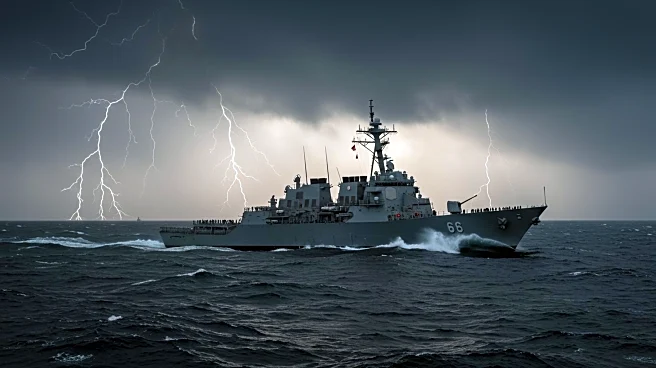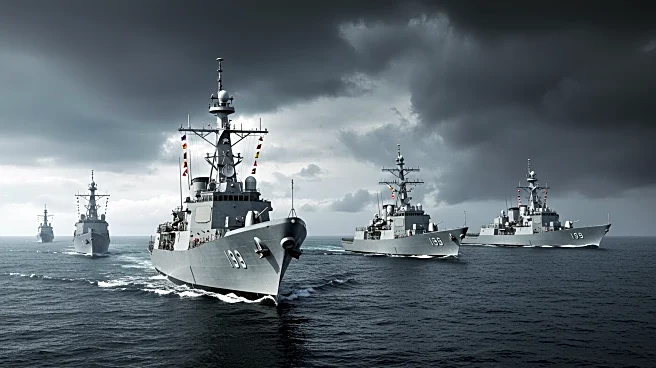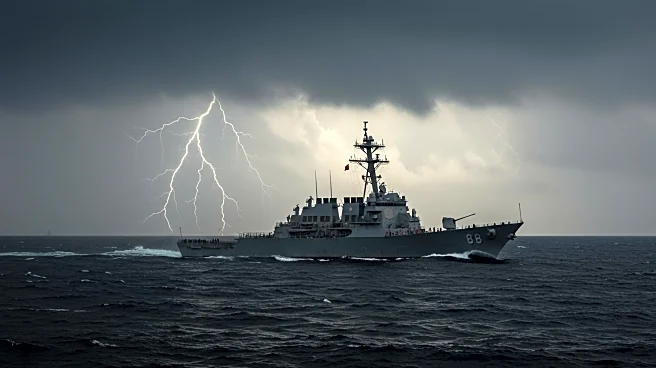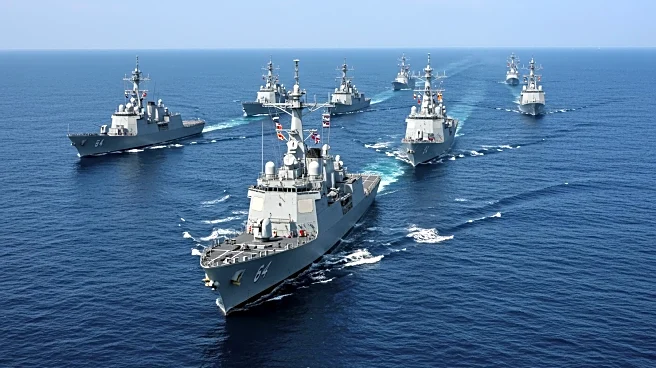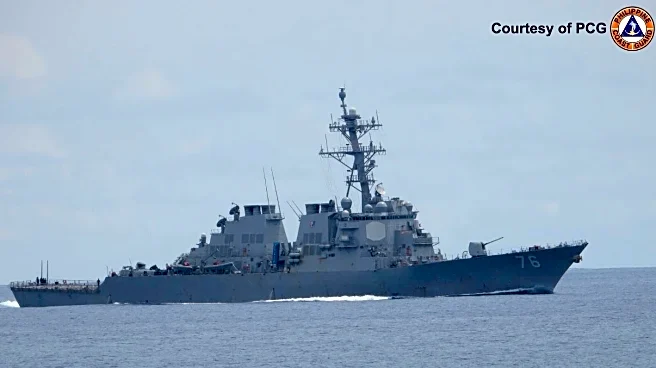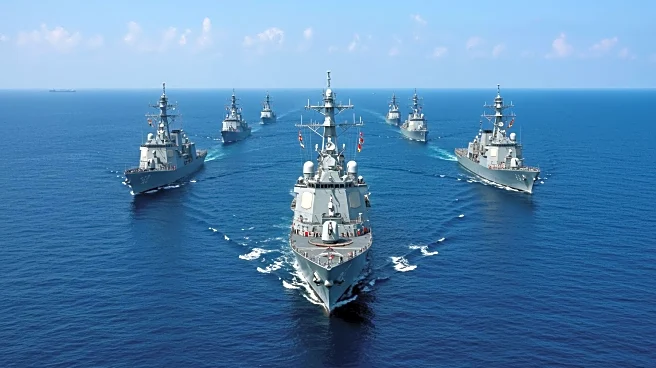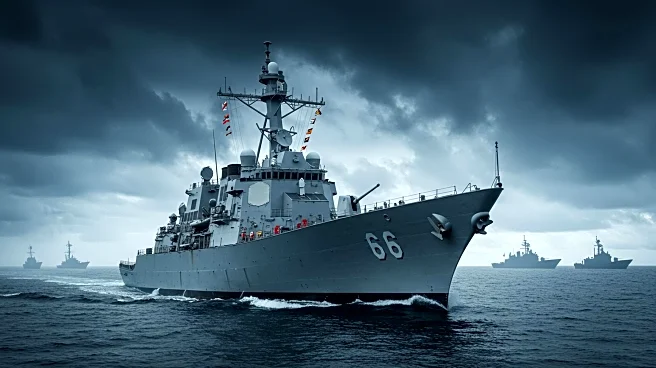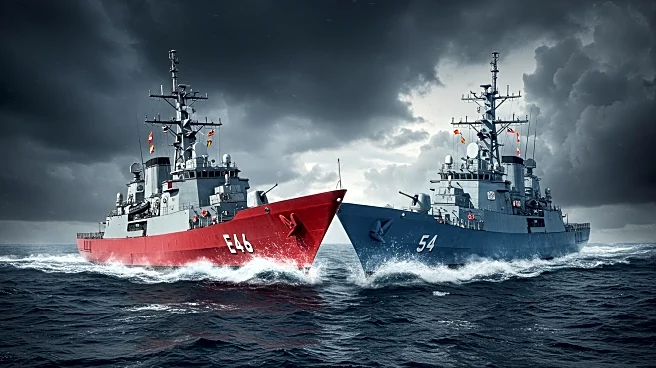What's Happening?
The US Navy has conducted a Freedom of Navigation operation near the Scarborough Shoal in the South China Sea, following a collision between Chinese military vessels and a Philippine Coast Guard ship. The operation involved the USS Higgins, a guided-missile destroyer, asserting navigational rights in the disputed waters. China, the Philippines, and Taiwan all claim sovereignty over the Scarborough Shoal, which is strategically located within the Philippines' exclusive economic zone. The US Navy's presence has been met with accusations from China of violating its territorial sovereignty, although the US maintains its operations are in accordance with international law.
Why It's Important?
The US Navy's operations in the South China Sea are a critical component of the US's strategy to counter China's territorial claims and assert freedom of navigation in international waters. The South China Sea is a vital maritime route for global trade, and the US's actions are intended to uphold international maritime laws and prevent any single nation from dominating the region. This situation has significant implications for regional security and international relations, as it involves multiple countries with overlapping claims. The US's presence also reinforces its commitment to its allies, particularly the Philippines, and its role in maintaining stability in the Asia-Pacific region.
What's Next?
The US is expected to continue its Freedom of Navigation operations in the South China Sea, which may lead to further confrontations with Chinese forces. Diplomatic efforts may be pursued to address the underlying territorial disputes, but the path to resolution remains complex given the competing interests involved. Regional stakeholders, including ASEAN countries, may seek to mediate and de-escalate tensions to prevent conflict. The international community will be closely monitoring developments, as the South China Sea remains a critical area for global security and economic interests.
